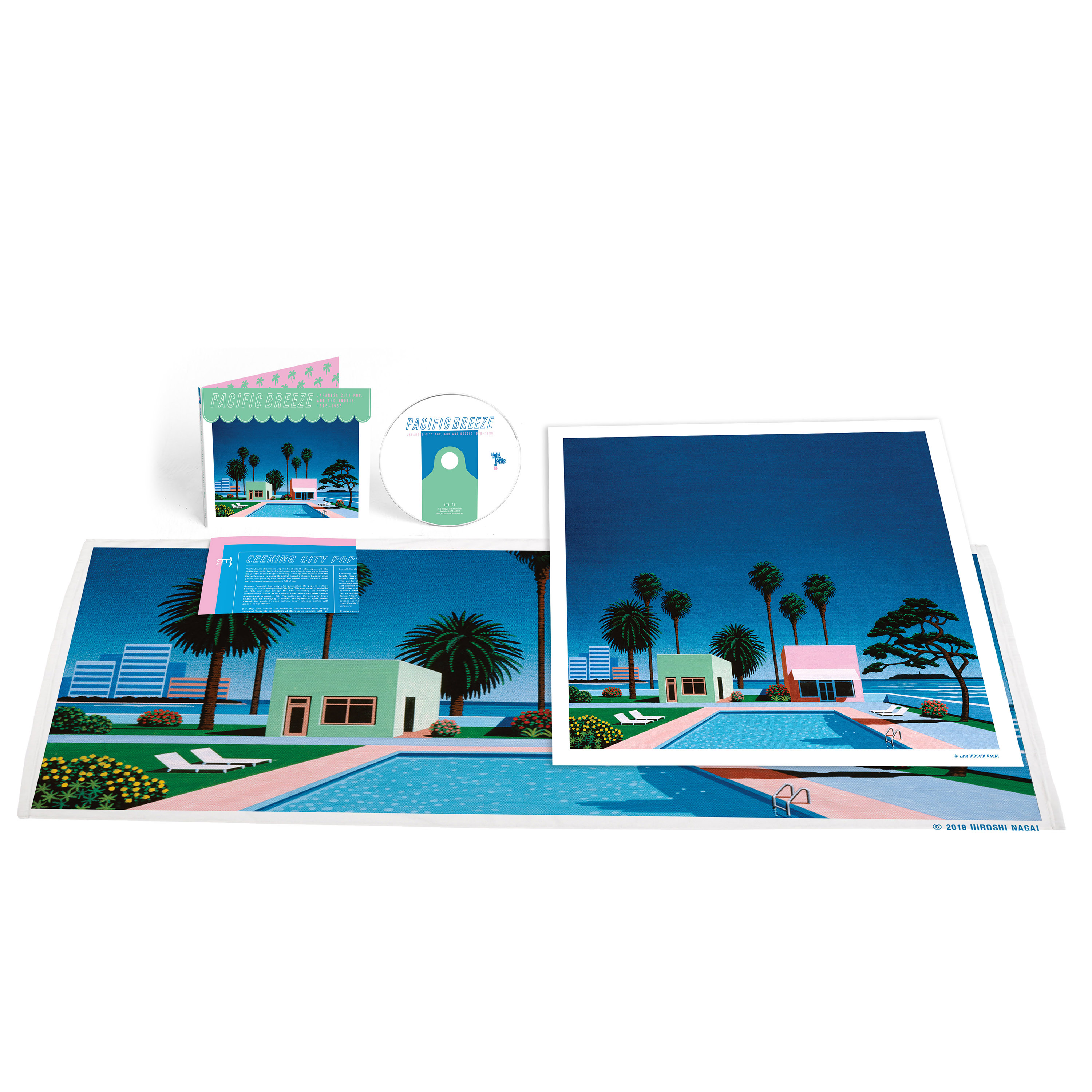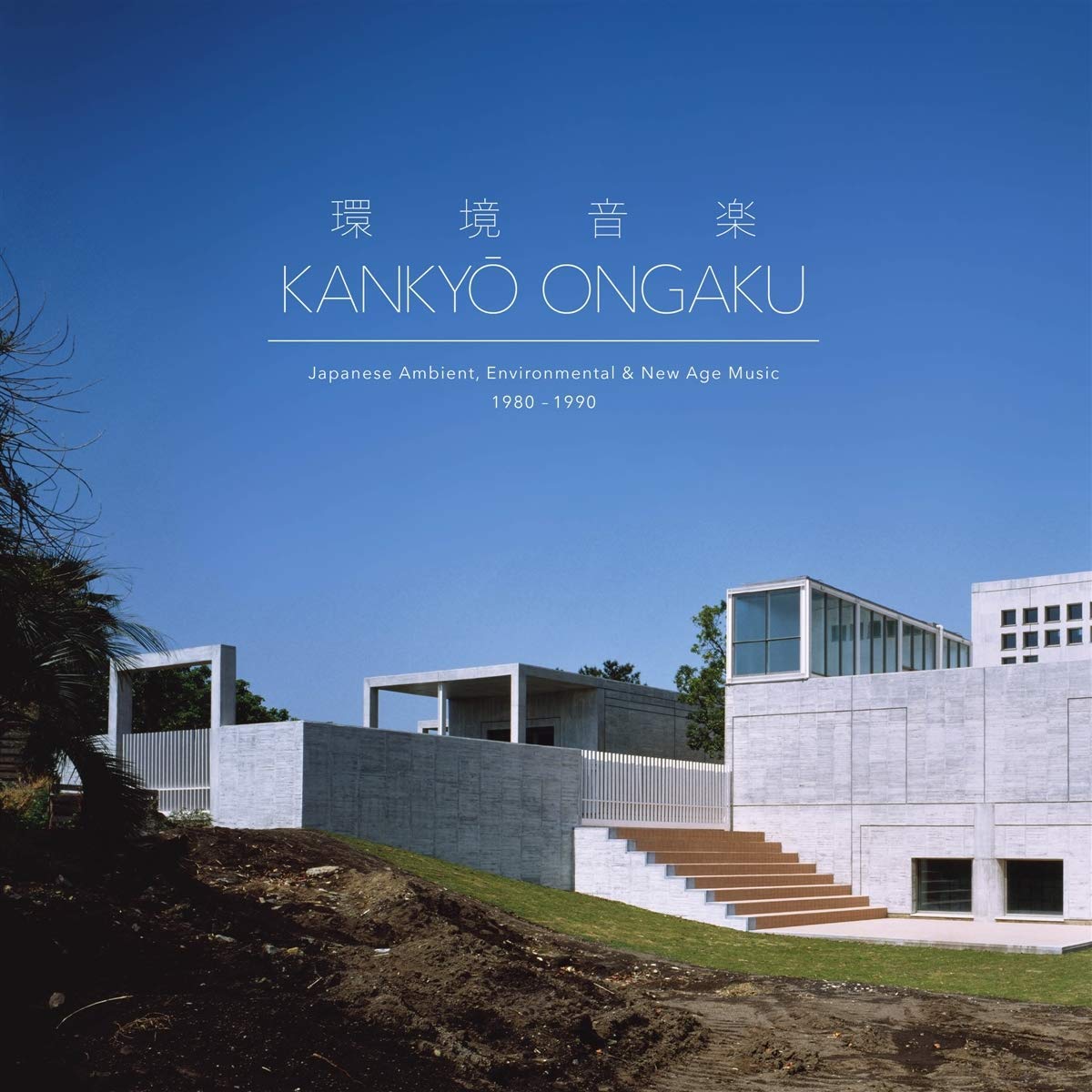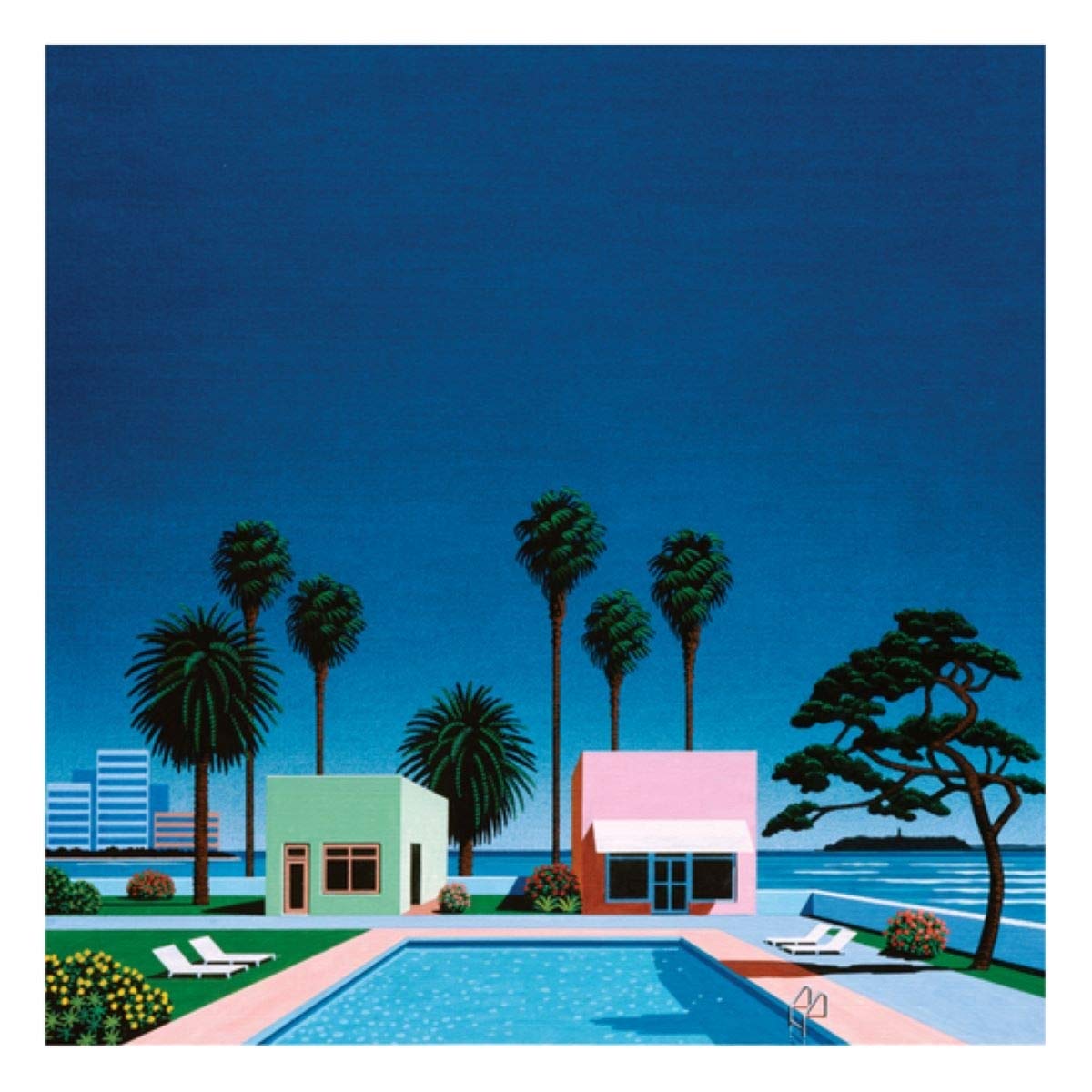“細野晴臣は過去半世紀の日本のポピュラー音楽において
大きな役割を果たしていることに気づいた”
Light In The Atticの再発プロデューサーに訊く
『Even A Tree Can Shed Tears』、『Kankyō Ongaku』、『Pacific Breeze』という日本のアーカイヴ音源を集めた3種類のコンピレーション・アルバムが半年ほど前から話題になっていることを多くの方が気づいていることだろう。それらをリイシューしているのが、アメリカはワシントン州シアトルに拠点を置くレーベルで、同所にレコード・ショップも持つLight In The Attic(LITA)。もう15年以上の活動歴を誇るインディーズで、元祖ラップ・グループとも言われるザ・ラスト・ポエッツのリイシューをきっかけに、これまでに地域、時代、ジャンルを横断した様々なカタログを独自にリリースしてきている。フランソワーズ・アルディ、セルジュ・ゲンズブール、ベティ・デイヴィス、シャグスといった著名なアーティストから、謎のシンガー・ソングライターにして実はカナダ人株式ブローカーだったというルイスの激レアな初期作品まで……その中では特に、地元シアトルのモダン・ソウル〜ファンク系アーティストをコンパイルしたシリーズ『Wheedle’s Groove』の驚愕的にマニアックなラインナップが多くのファンを震撼させた。
そんなLITAが、近年、日本の音源を集中してリイシューしている。フォーク、ロック、アンビエント、ニューエイジ、シティ・ポップ……と日本の大衆音楽の歴史をジャンルごとにアーカイヴした上記の3作品に加え、細野晴臣の一連の旧作品と最新作『HOCHONO HOUSE』(2019年)もリリース、そしてこのあとは金延幸子の『み空』の再発(7/12発売)も控えている。そこで、LITAのレーベル・スタッフの一人で、これら日本作品のリイシュー・プロデューサー/メカニカル・ライセンス担当のYosuke Kitazawaにメールで取材を敢行した。日本生まれアメリカ在住、ある時期まで1枚のレコード購入に10ドル以上かけたことがなかったというYosuke Kitazawa氏。短い回答だったが、細野晴臣や、『Kankyō Ongaku』の監修者でもあるVisible Cloaksのスペンサー・ドラン(6月に開催されたVisible Cloaks、尾島由郎、柴野さつきによる東京公演の際に、環境音楽setとしてオープニングDJを担当した)への敬意、これらの作品を制作できることができたことの誇りなどを伝えてくれたのでお届けしよう。日本では権利関係の調整などで実現することが困難なこれらのコンピレーション・アルバム、ブックレットやアートワークも素晴らしいのでぜひ入手してほしいと思う。
(取材・文/岡村詩野 翻訳/相澤宏子)
Interview with Yosuke Kitazawa(Reissue Producer & Mechanical Licensing – Light In The Attic Records)
——まず、LITAがリイシュー作品を選ぶ際の基準をおしえてください。チームの中でどのように選んでいるのでしょうか?
Yosuke Kitazawa(以下、Y):我々のレーベルでどの作品を再発すべきか、選ぶ基準となる要素はたくさんあります。当たり前ですが、優れた音楽であることです。これが一番の要素ではありますが、商業的な成功のためにも、ビジネス的な観点からリリースについて考える必要があります。リイシューのアイデアは各方面から出てきます。レーベル内からのこともありますし、一緒に働く外部のプロデューサーが提案してくることもあります。適切な場所、適切なタイミングでプロジェクトが舞い込んでくることもあります。
――あなたがたのレーベルを昨今再び日本で知名度を高めたのは、細野晴臣の一連のリイシューでした。細野晴臣の作品をリイシューすることを決めたのはどういう理由からだったのでしょうか。
Y:Light In The Atticでの日本のアーカイバル・シリーズは次の3つのコンピレーションから始まりました。『Even A Tree Can Shed Tears』(ジャパニーズ・フォーク&ロック 1969-1973/2018年12月発表)、『Kankyō Ongaku』(ジャパニーズ・アンビエント&ニューエイジ 1980-1990/2019年2月発表)、『Pacific Breeze』(ジャパニーズ・シティポップ、AOR&ブギー 1976-1986/2019年5月発表)です。これら3つのコンピレーションのコンセプトに沿ったトラックリストを決めた後、細野晴臣が全てのコンピレーションを横断する中核的存在だったこと、過去半世紀の日本のポピュラー音楽を形取ることにおいて大きな役割を果たしていることに気づいたのです。これが、細野のソロ・ワークをリイシューしなければと決めた瞬間でした。このアイデアを最初に細野さんと話し合った時、日本の外にいる人たちがなぜ僕の音楽に興味を持つのか理解していませんでした。彼は、熱狂的なファンベースが世界中に広がってきているとは思ってもいなかったのです。
――実際、あなたがたのいるシアトル含めたアメリカの若いリスナーの間で細野の旧作品はどのように受け止められているのですか? 海外のコレクターたちの間で細野の当時のアナログ・レコードは高値で取引されているようですが、なぜ細野の作品はそのように今なお評価されていると思いますか?
Y:この音楽を最初に見つけた人たちと、これが国内でリリースされることを永らく待ち続けていた人たちがいます。双方が等しくエキサイトしたと思います。前者にとっては、驚くべき音楽という新しい世界への扉を開けてくれる新しい音楽であり、後者にとっては、やっと手にすることができる、違法にYoutuTubeにアップロードされたものや質の低いmp3音源に頼らなくて済むのです。細野の作品は、タイムレスなもので、時代遅れに聞こえることは決してありません。彼のディスコグラフィーは非常に奥深いので、探し続けることに終わりないほどの材料があります。そして、ほぼ全てのものに聴く価値があります。

――『Kankyō Ongaku』を企画したいきさつをおしえてください。この作品に収録されているような作品に、あなたが興味を持つことになったきっかけはどういうものですか?
Y:『Kankyō Ongaku』はスペンサー・ドラン(Spencer Doran)が発案者です。彼がこのコンピレーションのプロデューサーの1人です。スペンサーはVisible Cloaksのメンバーであり、熱心なレコード・コレクターでもあります。彼は日本のアンビエント・ミュージックの初期第一人者の1人でもあります。約10年前に彼が作った『Fairlights, Mallets and Bamboo- Fourth-world Japan』というミックス・テープは、インターネット上で出回り、後に『Kankyō Ongaku』の起点となりました。私たちはスペンサーの近くで働けて幸運でした。彼は信じられないほどの深い知識を持っていて、彼なしではこの企画は無理でした。
――『Kankyō Ongaku』のトレイラーPVは、モダンな建築物を映した洗練された映像ですが、実際にこれらの音楽はアーキテクチュアーとの親和性を感じさせます。建築物とこれらの音楽との関係をどのように考えていますか?
Y:これは、コンピレーションを制作する過程を通して意識していたことです。カヴァーには槙文彦の建築を岩崎美術館の村井紀が撮った写真を使っています。槇文彦がデザインした建築の一つに、株式会社ワコールのアートセンターのビル《SPIRAL》がありますが、これはコラボレーションという文脈では『Kankyō Ongaku』の先駆けとなりました。尾島由郎や越智義朗(いずれもコンピレーションに参加)といったアーティストには、かつて《SPIRAL》の中で演奏した音楽を作るよう企業が依頼をしています。他にも、物理的な空間のために音楽を作るようミュージシャンやサウンド・アーティストに依頼していた企業や公共団体の事例がありました。多くの楽曲が建築と固有の関係性を持っており、多くのアーティストが音楽を作るための物理的な空間として建築を意識していました。
――では、『Pacific Breeze』の方はどのような座組みでスタートしたのですか?
Y:『Pacific Breeze』はアンディー・キャビック(Vetiverのメンバー)、マーク“フロスティ”マクニール(LAのラジオ局=Dublabの設立者)、ザック・カウィー(DJ、Netflixのドラマ『マスター・オブ・ゼロ(Master Of None)』など多数の音楽監督もつとめる選曲家)を含むチームによって作られました。日本の音楽を世界に紹介する目的のもと作られた3つのオリジナル・コンピレーションの一つです。これは60~70年代のジャバニーズ・フォーク、ロックをフィーチャーした『Even A Tree Can Shed Tears』から自然に派生して進めたプロジェクトでした。そのコンピレーションで参加している多くのミュージシャンが今ではシティ・ポップとして知られている音楽を作っています。ですから、この作品を通してシティ・ポップというジャンルが中心になると最初からわかっていました。ただ、シティ・ポップというものを正確に定義するのは容易くありません。これこそがシティ・ポップだと考え得る、たくさんの異なるスタイルの音楽があります。しかし、どういうわけか、『Pacific Breeze』で我々がやったように、それらを一緒にまとめると、意味があるものになるのです。
——次の日本の作品のリイシューは金延幸子の『み空』です。つい先ごろも、ニューヨークでヨ・ラ・テンゴのメンバーらをバックに演奏もしていましたね。
Y:金延幸子の2曲(1曲は彼女自身の名義、もう1曲は「愚」の曲)は『Even A Tree Can Shed Tears』に入っていました。そして、我々は日本のアーカイバル・シリーズを構想する前から『み空』がずっと好きでした。このコンピレーションの話し合いを幸子と直接することができ、何十年も彼女がカリフォルニアに住んできたことが分かったのです。我々は、『み空』をリイシューするべき時期が来たと判断するまで彼女と連絡を取り続けました。そして、彼女がリイシュー関連でライブを数カ所ですることができました。幸子が全面的にプロジェクトに参加することになり嬉しく思っています。つい先週、ロサンゼルスで、ぎゅうぎゅうの観衆の中で特別なライブを披露してくれました。その前の週には、ニューヨークのセントラル・パークを含む2箇所でショーを行いました。今、彼女のために物事が始まったばかりなのです!
"『Kankyō Ongaku』の多くの楽曲が建築と固有の関係性を持っており、多くのアーティストが音楽を作るための物理的な空間として建築を意識していた"

Interview with Yosuke Kitazawa(Reissue Producer & Mechanical Licensing – Light In The Attic Records)
――First, What are the criteria for choosing the reissue works? How and what process do you choose in your team?
Yosuke Kitazawa(Y):There are many different factors that influence what Light In The Attic chooses to reissue. The music has to be great, of course – that is the number one factor. But we also need to consider each release from a business perspective as well, to make sure that it makes sense financially. The idea for a reissue can come from anywhere – oftentimes it comes from within Light In The Attic, sometimes we work with outside producers who may suggest an idea, and sometimes a project may fall on our laps just for being in the right place at the right time.
――With a series of reissues by Haruomi Hosono, your label has quickly become well-known in Japan. What kind of thought did this Hosono reissue realize? Please tell us when and how did you offer to the Hosono, including the response from the Hosono.
Y:The idea for Light In The Attic’s Japan Archival Series began with three compilations: Even A Tree Can Shed Tears: Japanese Folk & Rock 1969-1973, Kankyō Ongaku: Japanese Ambient, Environmental & New Age Music 1980-1990, and Pacific Breeze: Japanese City Pop, AOR & Boogie 1976-1986. After finalizing the concept track list for those three compilations, we realized that Haruomi Hosono was the central thread that ran through all three compilations, and that he had an immense role in shaping Japanese popular music of the past half century. That’s when we decided we needed to reissue Hosono’s solo works on their own. When we first discussed this idea with Hosono-san, he didn’t understand why people outside of Japan would be interested in his music. He had no idea that a passionate fanbase had been growing all around the world.
――How is Hosono’s old works perceived among the young listeners of the United States … especially Seatle neighborhood, including your own personal thoughts? It seems that Hosono’s analog records at that time were being traded at high prices among foreign collectors, but why do you think that Hosono’s works are still evaluated like that?
Y:There are those who are discovering this music for the first time, and there are those who have been waiting forever for these titles to be released domestically. They all seem equally excited. To the former, this is brand new music that opens the door to a whole new world of incredible music. To the latter, they can finally own this music and don’t have to rely on illegal YouTube uploads or low-quality mp3 vinyl rips. I think Hosono’s body of work is timeless and never sounds dated. His discography is so deep that there’s a never-ending well of material to discover – and almost all of it is worth hearing.
――About “Kankyō Ongaku”, please tell us first the process of planning this. What kind of reason did you become interested in the work that is included in this work?
Y:Kankyō Ongaku is the brainchild of Spencer Doran, one of the producers of the compilation. He’s part of the group Visible Cloaks, and a passionate record collector. He was one of the early champions of Japanese ambient music, and about a decade ago he made a mixtape called Fairlights, Mallets and Bamboo- Fourth-world Japan that made the rounds on the internet, and that was basically the genesis of what became Kankyō Ongaku. We were fortunate to be able to work closely with Spencer, who has incredibly deep knowledge of this material and we couldn’t have done it without him.
――The trailer PV of “Kankyō Ongaku” is a sophisticated image of a modern building. Actually, these musics have an affinity for the architecture. How do you think about the relationship between the architecture and music?
Y:This is something that we were conscious of throughout the process of producing the compilation. The cover uses architectural photos by Osamu Murai of the Iwasaki Art Museum, designed by Fumihiko Maki. The Spiral Building, also designed by Fumihiko Maki, houses the Wacoal Art Center, which was one of the pioneers of kankyō ongaku within a corporate context. They commissioned artists like Yoshio Ojima and Yoshiaki Ochi (both on the compilation) to create music to be played inside the Spiral Building. There were many other similar instances of corporations and public entities commissioning musicians and sound artists to create music specifically for a physical space. So, a lot of this music has an inherent relationship to architecture, and many of the artists were conscious of the physical spaces for which they were creating the music.
――“Pacific Breeze”, Why did you plan such a work? please tell us the opportunity, the thought for this work as much as possible in detail.
Y:Pacific Breeze was compiled by a team consisting of Andy Cabic (from the band Vetiver), Mark “Frosty” McNeill (from radio station Dublab), and Zach Cowie (DJ and music supervisor). It was one of the three original compilation ideas we had for the Japan Archival Series, with the aim to introduce Japanese music to the world. It’s a natural progression from Even A Tree Can Shed Tears, which featured Japanese folk & rock music from the 60s-70s – many of the same musicians featured on that compilation went on to create music that’s now considered city pop. So, we knew from the start that this was a genre that had to be represented in the series. Defining what exactly is “City Pop” was not easy task, and in the end, we decided that it was more of a state of mind and an idea more so than a genre of music. There are so many different styles of music that can be considered “City Pop”, but somehow it all makes sense when you put them all together as we did on Pacific Breeze.
――Next Japanese reissue work is “Misora” by Sachiko Kanenobu. Why do you choose this work? I wanna read a booklet with the original liner notes. who did write this liner notes?
Y:Two of Sachiko’s songs (one under her own name, one as part of Gu) were included on Even A Tree Can Shed Tears, and we had always loved Misora even before we had the idea for the Japan Archival Series. We were able to get in touch with Sachiko directly to discuss the compilation and realized that she had been living in California for many decades. We kept in touch with her until we decided that the time was right for Misora to get reissued, and we were so lucky to have Sachiko totally on board with the project, especially because she was able to play several live shows around the reissue. Just last week Sachiko played a very special show to a packed crowd in Los Angeles, and just a week before that she played two shows in New York, including one at Central Park. And things are just getting started for her!
◾️Light In The Attic OFFICIAL SITE
https://lightintheattic.net/
関連記事
【REVIEW】
細野晴臣『HOCHONO HOUSE』
http://ai132qgt0r.previewdomain.jp/wp/reviews/hochono-house/
Text By Shino Okamura
Translation By Hiroko Aizawa





